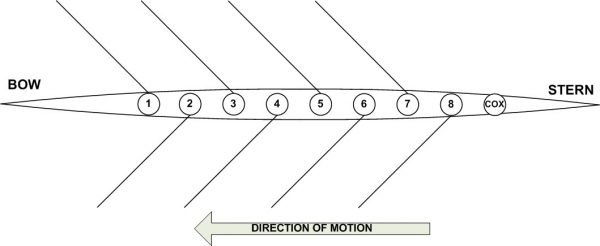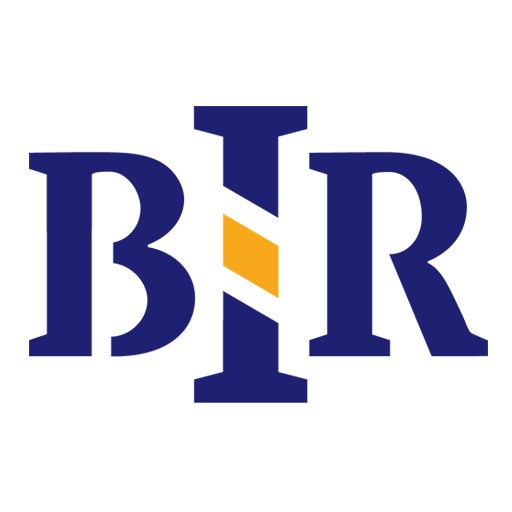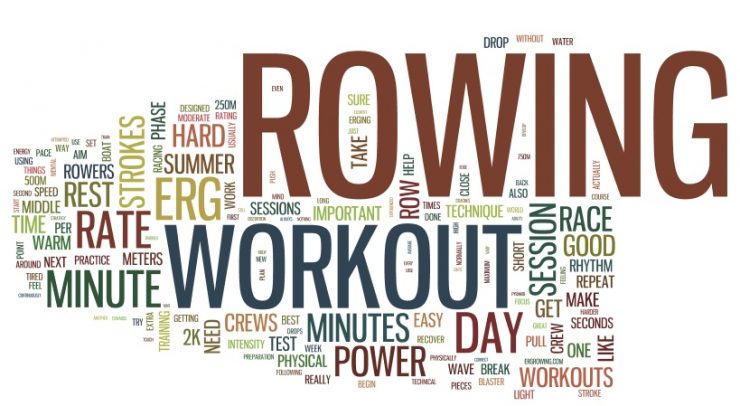This page contains invaluable information presented by Bruce Beall, Director of Rowing, for new Juniors rowers (and their parents) in the annual Rowing 101 session held at the start of each Fall Season. It is not intended to replace attendance of that important event, but rather to serve as background information for those who have not yet attended Rowing 101, and as a refresher for Juniors and Masters rowers who have attended.
What is Rowing?
- Rowing is an unusual combination of cardiovascular exercise and strength training.
- Although it looks very simple and repetitive, it is extremely challenging to get a boat rowing well.
- The physical demands of rowing mean that year-round training really makes a big difference.
- Beyond physical power, rowing also requires teamwork, balance and rhythm.
- A boat with all its rowers in sync gains a momentum called “swing”.
- Swing is a moment of perfect efficiency of movement in a boat, with none of the rower’s energy wasted and a semi-magical feeling similar to other types of athletes being “in the zone”.
- To understand how difficult that is, consider that rowing is like running the mile, with up to 7 team-mates, each trying to take a step at the exact same time and with the same stride as everyone else.
- Beyond the physical aspect, rowing is an intensely tactical sport, and tactics often dictate results.
- Rowing is an activity that requires a swim test, but has a very low likelihood of anyone actually swimming (other than winning coxswains after the traditional regatta victory celebration).
“Where is the spiritual value of rowing?
The losing of oneself entirely to the cooperative effort of the crew as a whole.“
George Yeoman Pocock 1981-1976 – USRowing Hall of Fame inductee 1966
What are the Components of a Rowing Stroke?
- Catch – The beginning of stroke with the oar blade set upright and vertical (squared) in the water.
- Drive – The blade is pulled through the water by the rower to propel the boat.
- Finish – The oar handle is moved down, drawing the blade up and out of the water, while the rower also turns the handle so that the blade changes from a vertical to a horizontal (feathered) position.
- Recovery – The oar remains out of the water as the rower begins recovery, moving their hands away from the body and past the knees, pushing the oar backwards. The body follows the hands and the sliding seat moves forward, until, knees bent, the rower is ready for the next catch.
What are the 2 Types of Competitive Rowing?
- Sculling – Each rower has two oars, one in each hand (these oars are called sculls).
- Sweep – Each rower has one oar in both hands. Rowers are called either a port or starboard oar, depending on which side of the boat their oars are (US colleges all sweep row).
What are Rowing’s Racing Classifications?
- Juniors – Rowers aged 18 or younger, and almost always U-19 High School athletes.
- Masters – Post-collegiate rowers aged 27 or higher.
- Novices – A rower of any age in their first year/season in the sport.
- Collegiate – Between Juniors and Masters rowing, there is Collegiate Rowing which many BIR Juniors have graduated into, and many BIR Masters have previously competed within.
- Masters By Age
- A – 27-35 years of age
- B – 36-42 years of age
- C – 43-49 years of age
- D – 50-54 years of age
- E – 55-59 years of age
- F – 60-64 years of age
- G – 65-69 years of age
- H – 70-74 years of age
- I – 79-79 years of age
- J – 80 and over.
- Note that BIR has masters athletes competing across all classifications from A to J!
- Mens – Noted as M in regatta schedules and results (Juniors & Masters).
- Womens – Noted as W in regatta schedules and results (Juniors & Masters).
- Mixed – Noted as MX in regatta schedules and results (Masters only).
- Varsity – The A boat in each event for each Juniors team.
- 2 Varsity, 3 Varsity, 4 Varsity – The B (or Junior Varsity), C and D boats in each event for each Juniors team.
- Sculling Races:
- Single – One rower, two oars (written in regatta schedules and results as 1x).
- Double – Two rowers, four oars (2x).
- Quad – Four rowers, eight oars (4x).
- Sweep Races:
- Pair – Two rowers, two oars (can be with cox or without coxswain) – written as 2- or 2+.
- Four – Four rowers, four oars (with cox and without coxswain) – 4- or 4+.
- Eight – Eight rowers, eight oars (always with coxswain) – 8+.
- In both sculling and sweep rowing, there are also 2 classes of boats based on athlete’s bodyweight:
- Lightweight – Up to 150 pounds (boys) or 130 pounds (girls) – written as LW, LWT or Ltwt.
- Openweight – All rowers above the lightweight levels, either assumed (and not written at all) or noted as OW, OWT or HW.
How are the Seats Numbered Within a Boat?
Always from the bow to the stern. So in an eight, the rower closest to the bow is seat 1, then 2, all the way to seat 8 in the stern, closest to the coxswain. The #1 seat is also called the “bow seat”, while the #8 seat is also called the “stroke”.
A coxswain often also calls seats by groups, for example Seats #1 & #2 are the “bow pair” while seats #5 to #8 are the “stern four”.
 What does the Coxswain Do?
What does the Coxswain Do?
A rowing coxswain (AKA the cox, or cox’n) plays a unique sporting role as a key member of the boat, but one that is not actually exercising physically. He or she is very light so that the crew need not carry extra weight on the race course. If a coxswain is below a minimum weight, ballast in the form of a bag of sand must be carried in the boat to compensate.
Mentally and tactically, the coxswains are vital, as they have to:
- Steer a $60,000, 60ft boat with just one small rudder.
- Pace and motivate up to 8 team-mates as and when required over 1,000 to 5,000 meter races.
- Execute the coach’s pre-arranged and practiced race plan to perfection.
- Make instantaneous real-time decisions and adjustments to the plan throughout the race.
- Be ready for a short flight and a swift bath, once victorious.
Within each race, the success of every boat depends on the coxswain acting as the coach, while the coach can only look on – rowing has no time outs/substitutions/half-time adjustments and no coaching allowed during the race by anyone other than the coxswain.
What is Seat Racing?
BIR arranges athletes in boats via the theoretically simple approach known as “Seat Racing”. In seat racing, a coach will line up two or more boats in practice sessions, row a measured piece (a set distance or time), make note of the difference between the boats at the end, and then make a switch in personnel. The coach then rows an identical piece, and notes the difference, continuing to gather data and switch until they feel that the best alignment has been reached for all boats.
In practice, this process is subjective, nuanced, complicated and requires experience and insight on the part of the coaches, and dedication and consistency on the part of the rowers and coxswains.
Rowing Mistakes – What Constitutes “Bad Rowing”?
- Rushing The Slide – Coming up the slide to the catch too fast (throwing the rower’s weight toward the stern and causing the boat to slow down).
- Missing Water – a late catch (not getting the blade into the water and losing power at the beginning of the stroke).
- Washing Out – Raising the blade out of the water too soon, before the finish of the stroke (and losing power).
- Skying – Coming to the catch with the blade too high in the air above the water’s surface (then skimming the water during the slide, losing power).
- Crabbing – When the oar is not released cleanly from the water (rowers “catch a crab” when their oar gets stuck in the water at the finish, actively slowing the boat).
Tips for New Rowing Spectators:
- It is really hard to tell who is leading as the boats come down the course.
- It almost always looks like the crew closest to you is “moving” (overtaking) on the other crews.
- Watch the speed of the actual rowing: Sprinting stroke rates can reach 44+ strokes per minute.
- Winning boats have smooth, continuous, synchronized movement.
- At the finish line, most of the margin you see has taken place in the first 2/3 of the race.
- Bring binoculars (cowbell optional)!
- For more tips, see the BIR Parent Handbook here at bainbridgerowing.org.
 A Basic Rowing Glossary:
A Basic Rowing Glossary:
- The Boat:
- Shell – The type of narrow, long boat used in competitive rowing.
- Stern – The back end of the boat.
- Bow – The front end of the boat (where the bow ball is located).
- Port – The left side of the boat from the coxswain’s bow-facing view (the right side from the stern-facing rower’s perspective).
- Starboard – the right side of the boat from the coxswain’s bow-facing view (the left side from the stern-facing rower’s perspective).
- The Oar:
- Blade – The flat part of the oar that enters/displaces water to propel the boat.
- Handle – The end of the oar, where it is held by the rower.
- Shaft – The long main section of an oar, between the blade and the handle.
- Sleeve – A plate around the shaft that goes into the oarlock.
- Collar – A ring around the sleeve, designed to correctly position the oar and prevent slippage.
- C.L.A.M. – A ring that fits over the sleeve and against the collar to adjust the load on the oar for using the same oar in different types of boats (stands for Clip-on Load Adjusting Mechanism).
- Around each Rower in the Boat:
- Seat – The sliding seat each rower sits upon, mounted on wheels to allow movement.
- Slides – A set of two runner tracks in which each seat’s wheels roll.
- Foot Stretcher – An adjustable plate to which the rower’s shoes are attached.
- Gunwales – The top edges of the sides of the boat, where the riggers attach.
- Rigger – A triangular arm attached to the exterior of the boat that holds the oarlock.
- Oarlock – A “U” shaped plastic part in which the oar is placed, acting as as a pivot.
- Gate – A bar across the oarlock that keeps the oar in place.
- Cox Box – An electronic device combining a digital stroke rate monitor/elapsed time readout with a voice amplifier. The coxswain uses the cox box to manage the race and to make his or her commands more audible to the crew, typically via wears a headband-mounted microphone.
- Indoor Rowing:
- The Erg – Short for ergometer, a piece of exercise equipment that provides an excellent land-based simulation of the motion and physical stresses of rowing.
- Erg Test – A timed distance race simulation performed by an individual rower on an erg. Erg tests measure strength and conditioning progress, and aid coaches in selecting rowers for specific boats and seat positions.
- See more about Ergs on BIR’s Indoor Rowing page.
- During a Race:
- Racing Start – The opening strokes of a race, typically rowed at a high cadence to accelerate the boat.
- Cadence – The rowing stroke tempo, usually expressed in strokes per minute.
- Check It Down/Hold Water – A coxswain’s call for all rowers to square their blades and drag them through the water in order to slow down or stop the boat.
- Let It Run – A coxswain’s call for all rowers to stop rowing, permitting the boat to glide through the water.
- Power 10 – A coxswain’s call for the rowers to give it everything they can for a certain number of strokes.
- At a Regatta:
- Head Race – A timed event of up to 5000 meters, held generally in the fall, with each crew starting in single file and negotiating the race course as quickly as possible. The start time and finish times are recorded, the elapsed time calculated, and he fastest time wins. In masters events there is often an age-adjusted handicap.
- Sprint Race – National, collegiate, worlds, and Olympic sprint competitions are 2,000 meters, and held generally in the spring. The race course is divided into 6 to 8 lanes and each 500-meter section is marked with buoys. All boats start the race in assigned lanes at the same time and race to the finish line. Masters races are typically 1,000 meters. Juniors races are often 1,500 meters.
- Repêchage – A French term (pronounced rep-eh-shahj from repêcher, “to finish up again”). The repêchage is a second qualifying heat for boats that have already lost an initial race, providing a second (and last) chance to advance to the finals.
Recommended Reading for Rowing Beginners:
- The Boys in the Boat by Dan Brown – #1 Bestseller telling the amazing true story of the scrappy Pacific Northwest team that won the 1936 Olympic Rowing Gold Medal.
- The Amateurs by David Halberstam – Pulitzer-Prize-winning journalist’s true tale of four rowers competing to represent the USA at the 1984 Olympics.
- Assault on Lake Casitis by Brad Alan Lewis – Autobiography of a US Olympic sculler, and a book about challenging convention, overcoming defeat and working outside of an established system.
- Shell Game by Stephen Kiesling – An account of the special joys and torments of rowing that reflects on the discipline, teamwork, personal rewards, training, and competition of a college crew.
- Red Rose Crew by Daniel J. Boyne – The story of the first international women’s crew team – a group of amazing women battling sexual prejudice, bureaucracy, and male domination as they row their way to international success and glory.
To learn more about youth rowing on Bainbridge Island, please head over to the BIR Juniors General Info page.
To learn more about adult rowing on Bainbridge Island, please head over to the BIR Masters General Info page.




